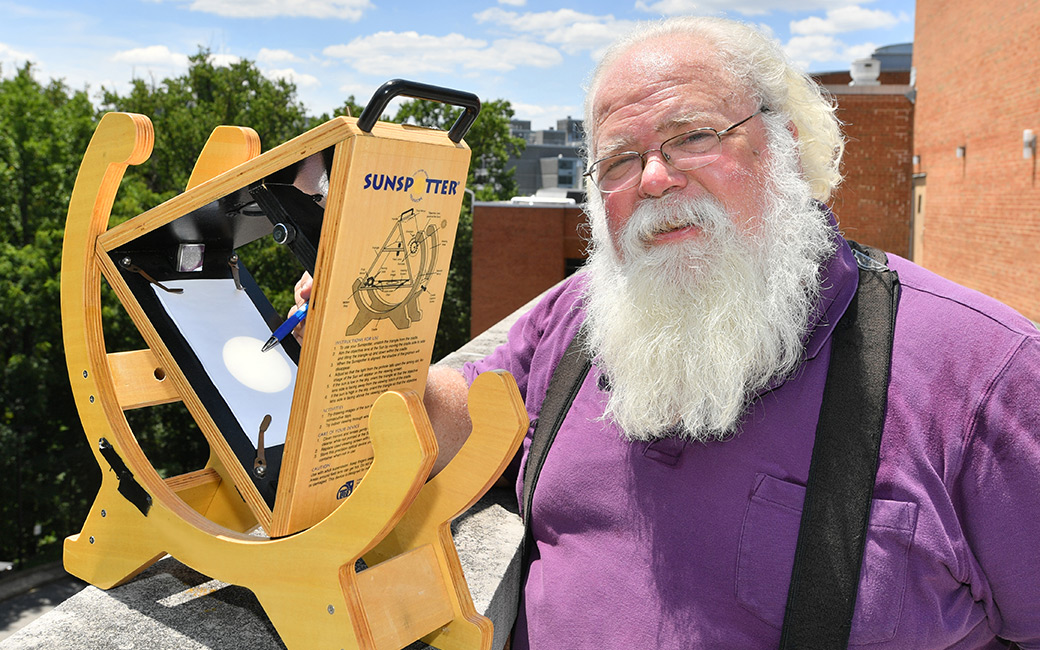Touching the sun
Towson University associate professor talks about NASA’s upcoming mission to explore the sun
By Megan Bradshaw on July 26, 2018

On July 30, NASA’s Parker Solar Probe is expected to launch its seven-year mission to probe the outer corona of the sun. The robotic spacecraft—about the size of a small car—will fly as close as 3.8 million miles to the sun’s surface to collect information to help scientists better understand the corona and the phenomenon of solar wind.
Towson University Jess & Mildred Fisher College of Science and Mathematics physics associate professor Alex Storrs, Ph.D., answered questions about this historic mission.
This mission is the first of its kind. Why has it taken so long to explore the sun’s atmosphere?
Our present method of exploring the sun is via remote sensing, which is difficult. Another obstacle to getting to this point has been technology. In order to have a chance to be successful, the probe needs to be lightweight and have boosters powerful enough to launch it in an orbit that gets close to the sun. Parker will actually be one of the fastest manmade objects ever.
How extensive is our understanding of the sun and its effect on the solar system?
We know a lot but not enough to make reliable predictions, and these are important. We need to understand the sun to minimize its effects on our lives here on Earth. People spend their entire careers studying the sun and its corona and have done for a couple of generations now. Long ago, people observed the sun with the naked eye at sunrise or sunset. These days satellites have revolutionized how we study the sun.
What do we need to know about the sun, and how will this mission begin that learning process?
We would like to be able to understand and predict solar storms, which can have a big effect on the Earth. This probe moves us physically closer to the sun than the satellites we have in orbit now. Getting closer gives us more extensive and detailed information than we are getting now.
The onboard instrument suites will study magnetic fields, plasma and energy particles and solar wind. Why would the scientists pick these areas from among a presumably large field of study?
Solar wind is energy particles in a magnetic field. So choosing these onboard instrument suites will give the scientists the information they need to study solar wind more deeply and begin to understand it. Understanding solar wind is essential to modern life because of the effects it has on our daily activities—light, heat, the internet, etc.
What is “space weather” and how does it affect Earth?
Space weather is the action of the sun’s outer atmosphere on objects in the solar system. The Earth has a strong magnetic field that keeps this wind from hitting our atmosphere; otherwise it might be blown away. Indeed, we think the Earth’s first atmosphere was primarily hydrogen and helium and suffered just such a fate. Changes in the solar wind push and pull on this magnetic field, however, and can move it by noticeable amounts.
A moving magnetic field can generate an electric current in a conductor, and when the field moves across long transmission lines (i.e., high-tension power lines), it can make an electric surge that can shut down the grid if we don’t anticipate it. Similarly, satellites at geostationary orbit are outside the magnetic field and a large flux of solar wind particles can damage or destroy these satellites if care isn’t taken to protect them.